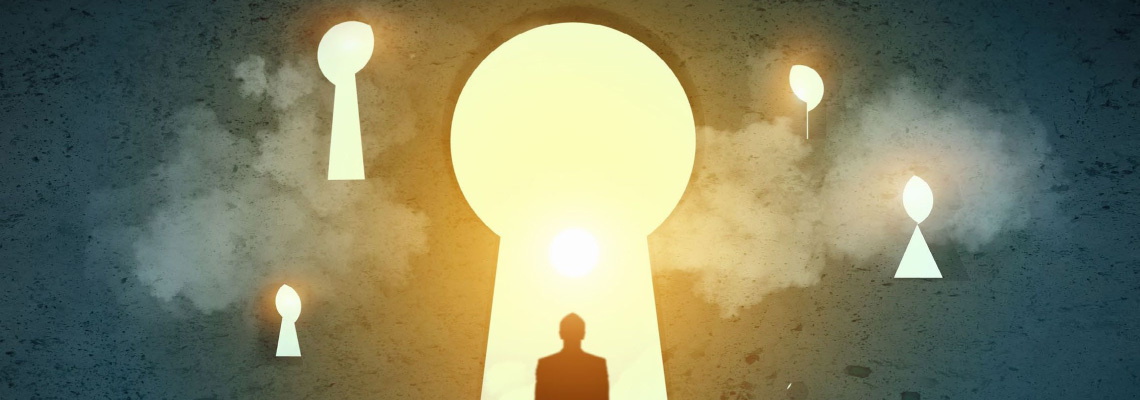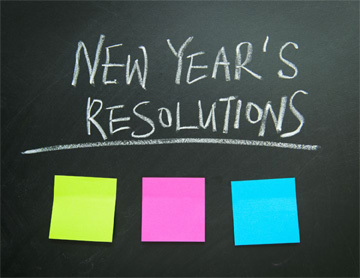The world is full of motivational speakers, self-help books and workshops encouraging people to change themselves and improve their lives. Yet, we are still surrounded by failed New Year’s resolutions, unused gym memberships, lapsed diets, persistent smoking habits, broken promises, and other examples of our failure to make simple, healthy changes. This paradox – of wanting to change ourselves for the better but finding it so incredibly hard to make change stick – is one of the reasons that so many more people are turning to coaching to support their journeys.
Our typical approach to an important personal change – whether in a coaching context or when trying self-guided change – is straightforward. Usually, we define why the change or new behaviour is so essential (often scaring ourselves with the dire consequences if we do not change). Next, we formulate a clear, energising goal and define the action steps required to achieve it. Then we go ahead and try to do it, drawing on our willpower and discipline to follow through on these commitments.
The numbers are in – and, unfortunately, they don’t look good. What they show is that this strategy does not appear to be very effective for most of us. For example, in something as serious as life-threatening cardiac issues, recent studies into recovery rates in heart patients suggest that even after doctors tell them that a lifestyle change is essential to save their life, as few as one in five patients will actually follow through and make those lifestyle changes permanently.
The Knowing-Doing Gap
The ‘Knowing-Doing Gap’ is a concept that has become the topic of numerous books and articles (Kegan & Lahey). It refers to the gap between our intentions, things we actually want to carry out, and what we are actually able to do. You may be familiar with the knowing-doing gap from your own experience or from observing a child, client, or staff member who seems hopelessly stuck and unable to change even the simplest behaviour, despite apparently wanting to and trying hard to. This individual may even be self-aware enough to see how their actions are creating their own problem, what behaviour needs to change, and may even have a set of clearly defined actions and goals… only to return with little to no progress or change to report. It’s enough to make any leader, coach or parent doubt themselves!
Why is Change so Hard?
Human beings have an interesting relationship with change. Some believe that humans are inherently resistant to change and its difficulties, especially in later life. Yet, there are many ways in which we humans confidently take on massive life changes every day, and thousands of stories of incredible transformations in people well into their later years. Why is it that sometimes change is easy and at other times it is hard?
"The definition of insanity is doing the same thing over and over again and expecting a different result ,Attributed to Albert Einstein" -Henry Ford
Competing Commitments
When we use willpower as a primary change strategy, we are basically fighting ourselves, acknowledging that something deep within us does not want to change and using sheer determination to overcome it.
To approach the challenge of personal development with objectivity and compassion, we need to understand what happens when we try to change. In ‘Immunity to Change. How To Overcome It and Unlock the Potential in Yourself and Your Organization’, Harvard Graduate School of Education professors Robert Kegan and Lisa Laskow Lahey address the question: “Why is personal change so difficult?”
Kegan and Lahey’s research suggests that the problem is not a failure of willpower. Rather, our difficulty in achieving our goals is more to do with an ‘emotional immune system’ that activates and protects us from the risks of change. Our real reason for subconsciously resisting or self-sabotaging our changes, their data suggests, is because the change threatens some other deeply held, competing commitment. They say, “We aren’t stupid. We are simply dedicated to honoring our commitments, just not the ones that we are conscious of.”
These competing commitments are mostly subconscious and linked to our image of ourselves as a particular kind of person. For example, if my self-image is committed to being ‘the one who helps’, then I might subconsciously resist accepting or asking for help from others. This means that any attempt to change my behaviour represents a threat to this self-image.
When facing an impossible conflict or tension between the perceived implications of the new behaviour and the demands of the self-image, our emotional immune system or defence mechanisms are activated to protect us and maintain the status quo.
For many people, holding two sets of competing commitments or beliefs is a paralysing experience. Many clients who report feeling stuck find that they are torn between two conflicting obligations and are unable to break the tie. For example, an Enneagram (Ennea) 7 client who is struggling with their health might be truly committed to getting healthy – but their underlying Ennea 7 commitment to not being restricted leads them to resist sticking to their rigid diet plan. Or an Ennea 2 might be committed to giving their children more independence, but find themselves pulled back in by their need to be needed, constantly breaking their resolve. The problem is that we're not always aware of this private, ongoing struggle.
Our Internal Conflict
The Enneagram is a powerful tool to help people whose efforts to change are hindered because it assesses and reveals our deepest, often unconscious commitments and beliefs that drive us. These hidden ‘competing commitments’ often come from the core needs and motivations of our Enneagram Type, and when we set a coaching or developmental goal that conflicts with these core needs, our ‘emotional immune system’ kicks in, activating our defence mechanisms to protect us – or rather, to protect our deep-seated hidden commitments.
This immunity to change arises when a proposed change – whether it is one imposed on us or a personal goal – brings up a conflict with our deep beliefs, linked to our Enneagram Type, about how we need to be in the world to be safe. This is one of the reasons why we emphasise ‘motivation, not behaviour’ in our work with the Enneagram – because our behaviour choices and potential to change are limited by our core motivations or commitments. Ennea 9s, for instance, are deeply committed to being peaceful and non-disruptive, avoiding conflict. This means that when they are asked to commit to a change that requires disruptive or more conflictual behaviours without proper support and coaching, they are likely to trigger an immunity to change. They could struggle to behave in different ways and be pulled back into old behaviours instead. The same can apply to any of the nine Types for reasons driven by the different ‘hidden commitments’ that are unique to each Type.
These competing commitments exist for an evolutionary purpose, to protect our sense of self and keep us from accidentally doing ourselves psychological harm. However, if they are allowed to become fixed and become immunities to change, they can also prevent us from learning, growing, and expressing ourselves as individuals. In the Enneagram world, this pattern of immunity to change is often referred to as ‘being fixated’, and, as we know, the Enneagram offers an antidote to this in the form of deep self-awareness.
Immunity to Change Process
Unpacking these deep fears and commitments can be a challenging journey, with our ‘immune system’ fighting us every step of the way. A partnership with an experienced coach can prove an invaluable guide as we integrate the Enneagram into a compassionate process of unlocking these stuck points. The Immunity to Change process suggests unpacking these stuck points through four steps:
- Step 1: Get goal-oriented. The first step is familiar to coaching – defining the goal. Identify the area that the client wants to focus on for a positive change, describe the desired change (or example ‘improve physical health’) and then list all the actions that will help to achieve that goal (for example, ‘eating three balanced meals per day’ or ‘working out twice a week’). This step is often completed in the first coaching session.
- Step 2: Clear obstructive behaviours. Ask the client “What’s stopping you from doing it now?” and identify the behaviours and barriers that are stalling their efforts. This step may become more relevant after a period of failed experimentation, and you may need to help clients identify their behaviours and blockers. For example, a barrier to the physical health challenge might be ‘forgetting to pack lunch’ or ‘being too busy to hit the gym’.
- Step 3: Confront competing commitments. Here’s where the real self-awareness journey begins. Looking at the behaviours listed in Step 2, ask your client to imagine themselves doing the exact opposite. Work with them to connect to and identify the feelings and concerns that this raises for them, and what they fear will be compromised. These are their limiting beliefs or competing commitments, likely to resonate with their Enneagram Type’s defences and fears.
- Step 4: Challenge big assumptions. Ask your client to name these limiting beliefs that need to be overcome to achieve change. Write down their fears: “If I do ____, then ____ will happen” and reflect with your client how this pattern is represented in their Enneagram profile. The Enneagram offers ways to compassionately challenge those assumptions; for example, by using the dilemma scissors technique to bring in other perspectives.
The process outlined above can open up a more constructive coaching conversation about the assumptions, core beliefs, and conflicts that underpin these Type-centric commitments, noticing how the commitment may actually be self-defeating and creating controlled experiments to test it.
The Story of Sam
In the story below, we briefly illustrate how subconscious beliefs can sabotage goals.
|
Sam is committed to becoming more of a team player, collaborating and sharing ideas with others more openly. However, despite participating in coaching and team development workshops, Sam keeps falling back into old behaviours such as interrupting others, disregarding their input, making decisions alone and acting independently, much to the team and Sam's frustration. The coaching process asks Sam to visualise doing the exact opposite of those behaviours, then connect to the feelings and fears that come up. Sam's face changes. "Oh no! I'd never get ANYTHING finished. Working that way takes too long and slows me down. I won't be able to produce." Sam's commitment to being a better team player is subconsciously competing with a deep commitment to being fast, effective and maybe to avoid conflict and be able to do things as they please. The assumption underpinning this competing commitment is that speed and productivity are the most important goals and that Sam will not be appreciated or valued if they slow down or fail to meet a deadline... characteristic, limiting beliefs of an Enneagram 3. Sam is then able to notice how this commitment to being the best is actually reflecting poorly – in a failure to work well within a team. In this way, the primary and competing commitments can become a paradox to be resolved, rather than a false choice. |
Moving Towards Sustainable Change
While the Immunity to Change process makes it clear that real, sustained behaviour change may be even harder than expected, it also confirms the more reliable path for real transformation, aligned to the Enneagram integration journey. Instead of trying to modify our existing behaviours or practise new ones, we should be working deeper into our relationship with ourselves and identifying the beliefs and assumptions that are limiting us. Only then can we let go of some of our existing hidden commitments and drive sustainable, long-lasting change.
REFERENCES
Kegan, R., and Laskow Lahey, L. (2009) “Immunity to Change. How to Overcome It and Unlock the Potential in Yourself and Your Organization.”

 What is the Enneagram?
What is the Enneagram?
 Introduction to the 27 Subtypes
Introduction to the 27 Subtypes
 Introduction to the 3 Centers
Introduction to the 3 Centers
 Wings
Wings
 Lines and Integration
Lines and Integration
 Enneagram History & Origin
Enneagram History & Origin
 Enneagram for Myself
Enneagram for Myself
 Enneagram for Practitioners
Enneagram for Practitioners
 Enneagram for Business
Enneagram for Business
 iEQ9 Individual Reports
iEQ9 Individual Reports
 iEQ9 Team Reports
iEQ9 Team Reports
 iEQ9 Questionnaire
iEQ9 Questionnaire
 Training Events
Training Events
 Level 1 iEQ9 Accreditation
Level 1 iEQ9 Accreditation
 Level 2 Enneagram Team Dynamics
Level 2 Enneagram Team Dynamics
 International Enneagram Conference
International Enneagram Conference
 iEQ9 Community of Practice Events
iEQ9 Community of Practice Events
 About Integrative9
About Integrative9
 Meet the Faculty
Meet the Faculty
 Testimonials
Testimonials
 Contact Us
Contact Us


